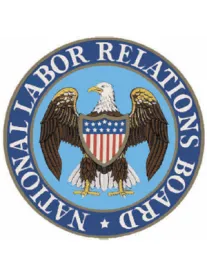The National Labor Relation Board (NLRB) has implemented several parts of its new election rule. U.S. District Court Judge Ketanji Brown Jackson enjoined parts of the rule that, in her view, were not lawfully promulgated. AFL-CIO v. NLRB, No. 20-CV-0675 (D. D.C. May 30, 2020). For more on the ruling, see our post, District Court Hits “Pause” on New NLRB Election Rule. The entire rule was scheduled to go into effect on May 31.
The new rule aimed to reform the controversial Obama-era “quickie election” regulations. Among the reforms that the Court decided would not go into effect on May 31 are:
- Expansion of the right to pre-election litigation of voter inclusion and eligibility issues
- Increased amount of time prior to an election for communication with employees about election issues
- Increased amount of time for employers to furnish a list of eligible voters to the union and NLRB Regional Office
- Limit to who may serve as election observers (only bargaining unit members)
- Delay of election certification where an appeal is pending
Rather than shelve the entire rule pending an appeal of the Judge’s ruling, the NLRB has implemented the remaining parts of the new rule unaffected by the Judge’s ruling. These include:
- Scheduling the initial hearing date at least 14 business days (rather than eight calendar days) from the Notice of Hearing
- Employer posting of the Notice of Petition within five business days (rather than two calendar days) after service of the Notice of Hearing.
- Filing, by the employer, of the Statement of Position within eight business days (rather than the seven calendar days under the quickie election rule) after service of the Notice of Hearing
- Establishment of a Statement of Position to be filed by the Petitioner in response to the issues raised in any Statement of Position
- Allowing the parties to file post-hearing briefs
- Ballot impoundment procedures when a request for review (appeal) is pending on the date the election is held
Critics say the Court’s Order prevents immediate application of reforms that would enhance employees’ rights to know who is eligible to vote before ballots are cast, allow more time for informed decision-making about union representation, and avoid procedural confusion caused by bargaining unit certifications while appeals of Regional Director rulings are pending.
The new election procedures are complex. Employers that receive election petitions are urged to contact counsel for guidance.






 />i
/>i
